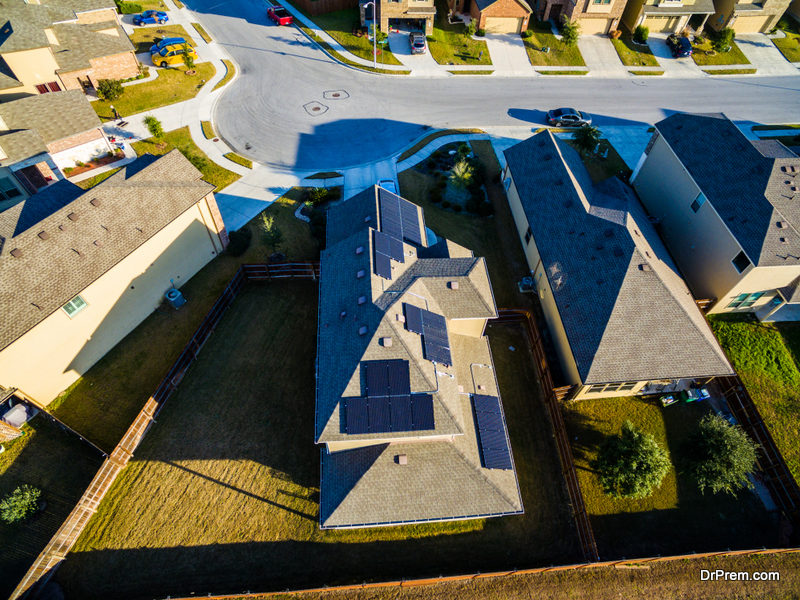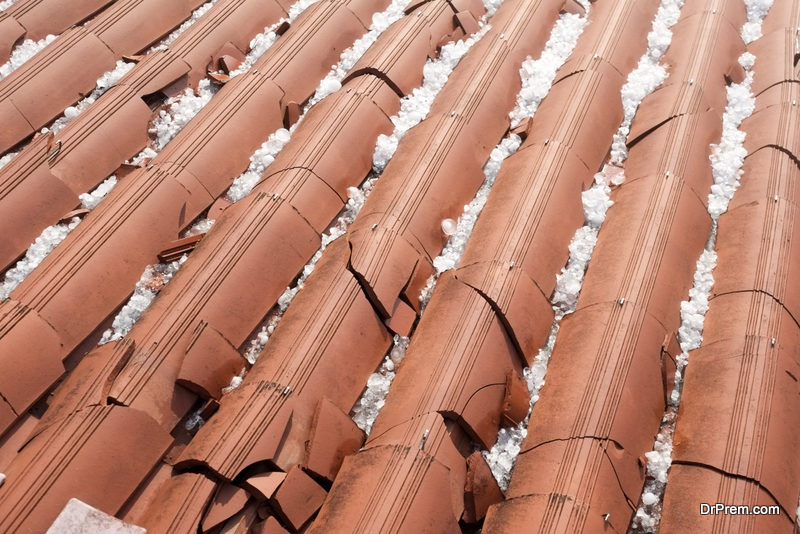Your home’s roof is an important protective barrier, and in many cases, an important aesthetic element that improves your home’s curb appeal. Unfortunately, even the best roofs only have a lifespan of roughly 20 years. In some cases, if the roof wasn’t installed properly or if it was poorly maintained, it may only last a few years. In other cases, you can keep a roof fully functional for much longer than 20 years. It all depends on which strategies you use to maximize that lifespan.
Strategies to Improve Your Roof’s Lifespan
These strategies can all help you increase the lifespan of your roof, and maximize your investment:
1. Get a chimney cap (and inspect your chimney regularly):
 If you have a chimney on your roof, it’s in your best interest to invest in a chimney cap. Chimney caps will help keep animals out of your chimney, and will improve its draft so it can function more efficiently. It’s also a good idea to inspect your chimney regularly; for example, if you have a brick-and-mortar chimney, it’s good to watch out for any damage, so you can avoid the possibility of a brick falling out and damaging the rest of your roof.
If you have a chimney on your roof, it’s in your best interest to invest in a chimney cap. Chimney caps will help keep animals out of your chimney, and will improve its draft so it can function more efficiently. It’s also a good idea to inspect your chimney regularly; for example, if you have a brick-and-mortar chimney, it’s good to watch out for any damage, so you can avoid the possibility of a brick falling out and damaging the rest of your roof.
2. Use the right materials:
There are many different types of roof you could install, each of which have advantages and disadvantages. For example, asphalt shingles are incredibly common because they’re inexpensive and easy to install, but they also tend to carry higher lifetime costs, since they need to be replaced every decade or two. Within these types of roofing materials, there’s a wide range of quality to choose from. Cheaper materials tend to be lower quality, ultimately leading to faster degradation, and the need to tend to your roof more frequently.
3. Hire the right contractor:
 Unless you’re doing the work yourself, you’ll need to think carefully about your choice in contractor. Good roofers will inspect all materials and be thorough in their work, making sure every inch of your new roof is installed properly. A good installation can last for many, many years, while a poor installation might degrade quicker.
Unless you’re doing the work yourself, you’ll need to think carefully about your choice in contractor. Good roofers will inspect all materials and be thorough in their work, making sure every inch of your new roof is installed properly. A good installation can last for many, many years, while a poor installation might degrade quicker.
4. Attend to leaks and cracks early:
If you notice your roof is leaking, don’t delay in making a repair. There are a few methods you can use to find the leak on your own, though it might be obvious from the inside if the ceiling is leaking in one specific area. Water damage has a nasty tendency to accumulate and deepen in severity over time, so the faster you work, the better. Usually, all it takes is the application of more sealant or the replacement of a few shingles—a small investment that can keep your roof functioning properly for many more years.
5. Pay attention to trees:
 If you have trees in your surroundings, keep an eye on them as they grow to make sure they don’t interfere with your roof. Overhanging branches could result in leaves falling on your roof. This may not seem like a big deal, but leaves are good at retaining moisture, and over time, a pileup of leaves can weaken the structural integrity of your tiles. It’s best to trim these branches before any of this happens.
If you have trees in your surroundings, keep an eye on them as they grow to make sure they don’t interfere with your roof. Overhanging branches could result in leaves falling on your roof. This may not seem like a big deal, but leaves are good at retaining moisture, and over time, a pileup of leaves can weaken the structural integrity of your tiles. It’s best to trim these branches before any of this happens.
6. Clean the gutters:
It’s a good idea to clean the gutters at least once a year. Your roof’s gutters are designed to collect water as it accumulates and redirect it somewhere safer, but when they become full of leaves and other debris, they can’t do their job effectively. It’s on you to get on the roof and clear them out, so they can carry out their function unimpeded.
7. Conduct regular inspections:
 Most roof-related problems start out small, and grow worse when they aren’t fixed early. For example, you might experience dry rot, or your shingles might start wearing out prematurely thanks to heavy exposure to the sun. If you or a roofing contractor notices these problems early, they can be easily resolved with a quick replacement or repair. Accordingly, it’s in your best interest to conduct a regular inspection, possibly once a year or every few years, to make sure everything is in good repair. It’s also a good idea to inspect your roof after any major storm.
Most roof-related problems start out small, and grow worse when they aren’t fixed early. For example, you might experience dry rot, or your shingles might start wearing out prematurely thanks to heavy exposure to the sun. If you or a roofing contractor notices these problems early, they can be easily resolved with a quick replacement or repair. Accordingly, it’s in your best interest to conduct a regular inspection, possibly once a year or every few years, to make sure everything is in good repair. It’s also a good idea to inspect your roof after any major storm.
Maximizing Your Investment
Your roof is an investment, and it’s in your best interest to treat it like one. If properly cared for, the thousands of dollars you spend on a new roof can keep your home protected for multiple decades, and even increase the resale value of your home. However, it takes time, effort, and attention to keep your roof in good working order for as long as possible. Don’t neglect these important strategies for maintenance and care.
Article Submitted By Community Writer




